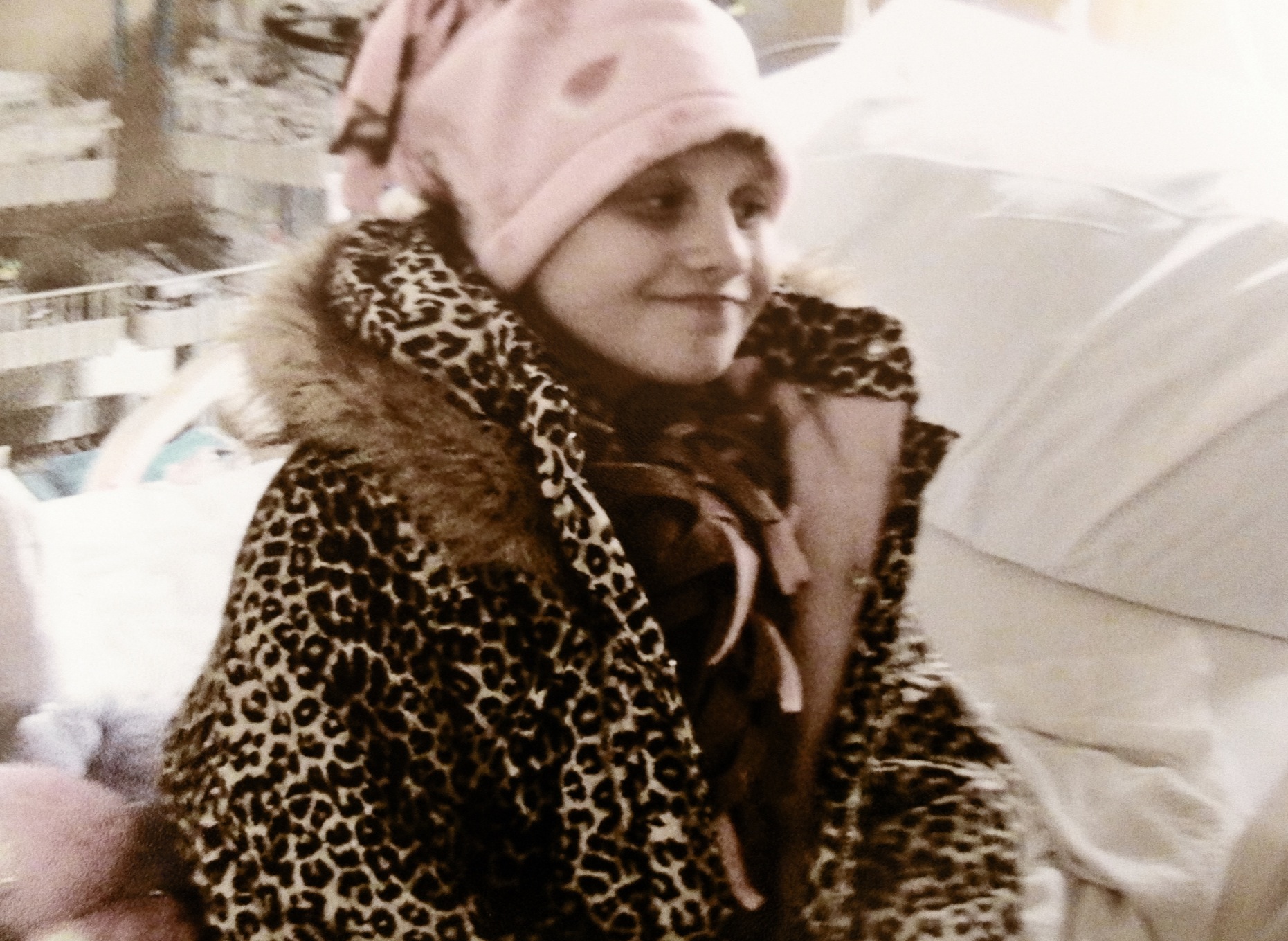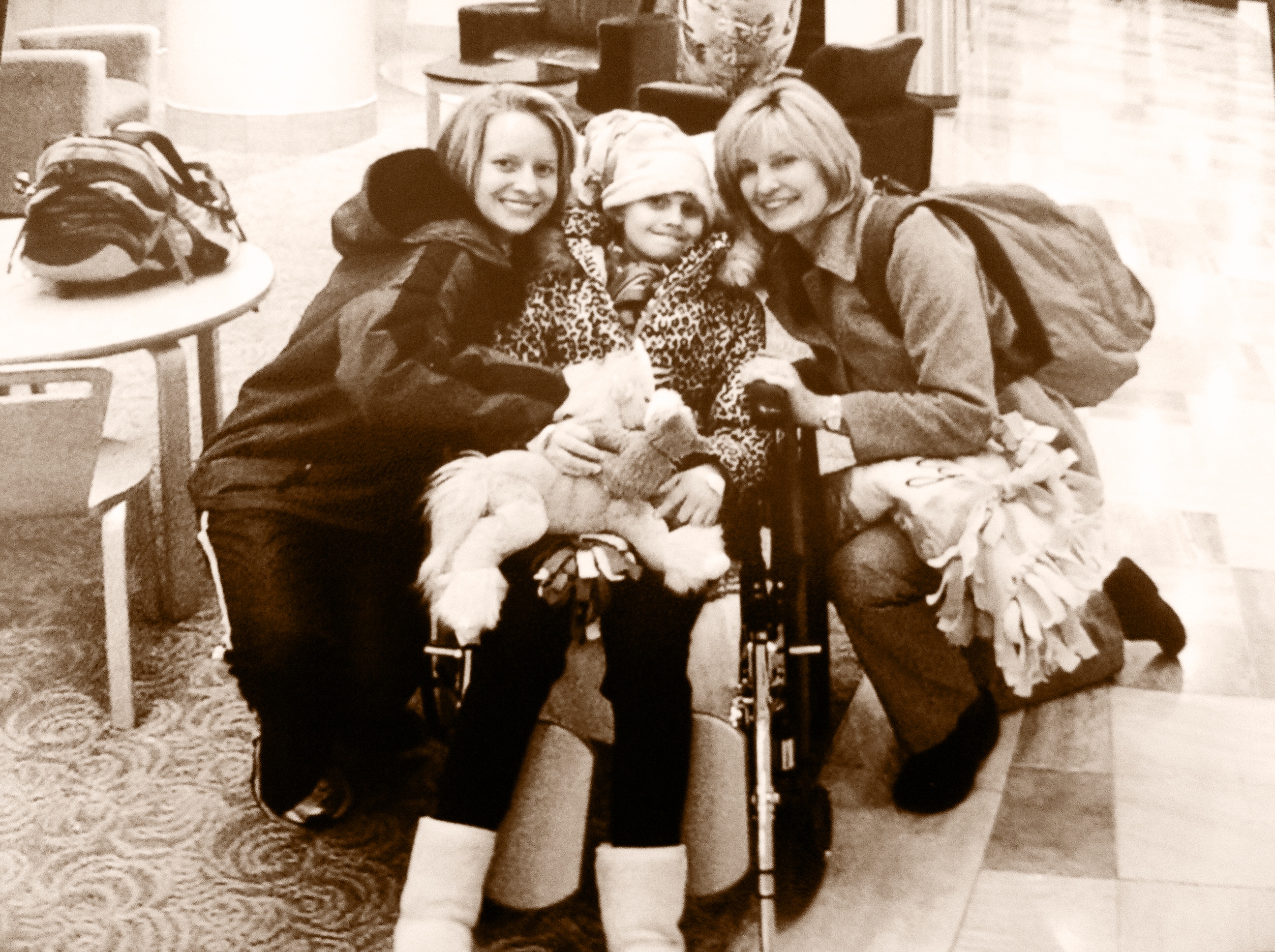A few weeks ago, Taylor and my parents flew about 3,000 miles from our hometown of Charlotte, NC, to Portland, OR, the misty city guarded by towering evergreens where my sister had brain surgery in a hospital on a hill five years ago.
My sister isn’t the same chatty, bouncy girl whose golden locks we received in a Ziploc bag in the family waiting room moments after they wheeled her back for surgery on that cold, gray morning in January 2008. The cross-country trips to Oregon for follow-up care have grown more difficult with each passing year.
For this, their last scheduled visit of the five-year follow-up study, my family had a connecting flight in Phoenix, AZ. My parents had several large carry-on bags to manage in addition to my sister. They had just minutes to get to their connecting flight, scheduled to leave from a terminal on the opposite end of the airport. Mom later told me that as they struggled to make it with their bags and my sister, who can’t see or run, she couldn’t help but think that airports are difficult to navigate for people with disabilities and too much luggage.
Then, a man in a shirt and tie discovered their dilemma. Also from Charlotte, he was on his way to a business meeting. His flight left from a different terminal, but he carried several of my family’s bags and walked with them all the way to their gate. On the long journey, they learned that he has physical therapists and occupational therapists in the family and believes in people who help others overcome injuries and disabilities; but through all the frenzy, they never got his name. Mom told me that if he hadn’t helped them, they would have missed their connecting flight to Portland.
 When my parents finally got on the plane and inched down the aisle towards their seats, they realized that they’d have to maneuver my sister over an elderly woman seated alone. A grandmotherly type, she had a “Pooh bear” shape, chocolate skin and silver hair, and the eyes behind her thick glasses looked kind. She told Mom that after selling Avon makeup for 32 years, she’d finally won a trip to Jamaica. She didn’t have a person in the world, but she’d been waiting for that trip, so she booked her flight and her room on Montego Bay. When she went to apply for her first-ever passport, she told the lady behind the counter, “I’m going to die before I can use this again, so when I come home, can I get a partial refund?” After she told her story, she got quiet for a while. But later, Mom glanced over and saw the woman holding Taylor’s hand in hers. She looked up, and her eyes met Mom’s, and she told Mom she’d pray for her daughter.
When my parents finally got on the plane and inched down the aisle towards their seats, they realized that they’d have to maneuver my sister over an elderly woman seated alone. A grandmotherly type, she had a “Pooh bear” shape, chocolate skin and silver hair, and the eyes behind her thick glasses looked kind. She told Mom that after selling Avon makeup for 32 years, she’d finally won a trip to Jamaica. She didn’t have a person in the world, but she’d been waiting for that trip, so she booked her flight and her room on Montego Bay. When she went to apply for her first-ever passport, she told the lady behind the counter, “I’m going to die before I can use this again, so when I come home, can I get a partial refund?” After she told her story, she got quiet for a while. But later, Mom glanced over and saw the woman holding Taylor’s hand in hers. She looked up, and her eyes met Mom’s, and she told Mom she’d pray for her daughter.
The woman on the plane wore her Avon name tag for her first trip to the Caribbean; Mom told me she can picture it, but for the life of her, she can’t remember her name.
Fighting a monster like Batten disease day in and day out makes it easy to get caught up in your own problems. It makes it easy to miss the accidental moments and the unexpected angels.
But at the end of the day, aren’t those life’s most beautiful things?
Aren’t they all any of us can really hope to have – whether or not we’re facing a terminal disease?


